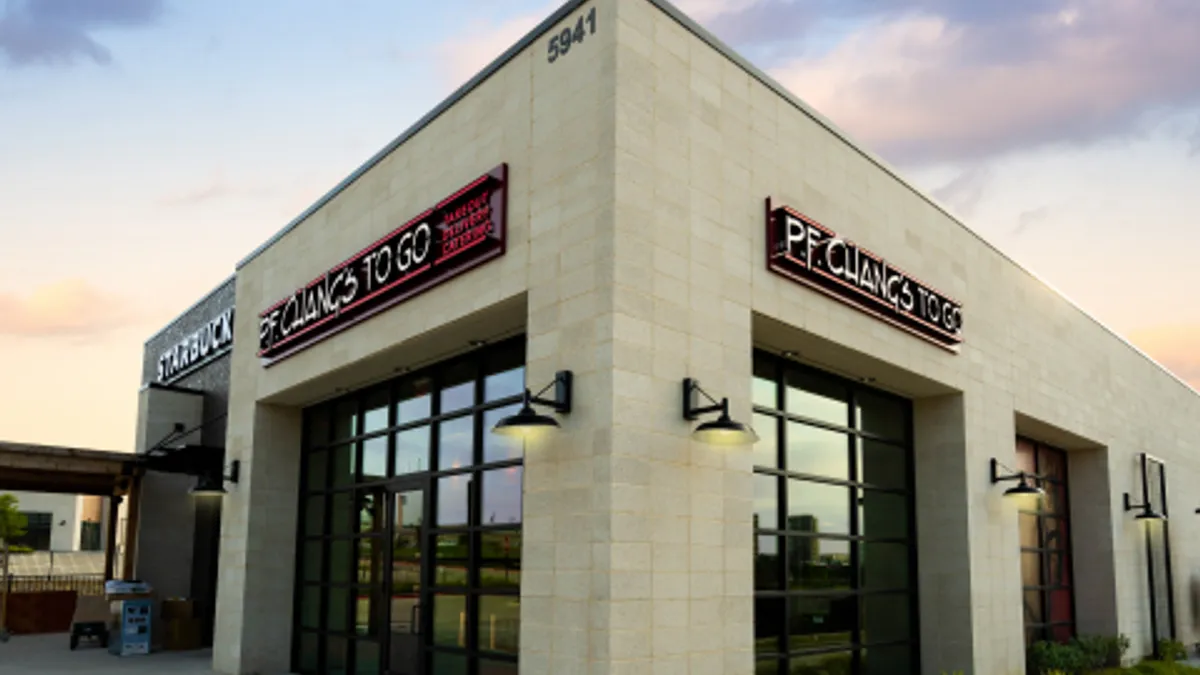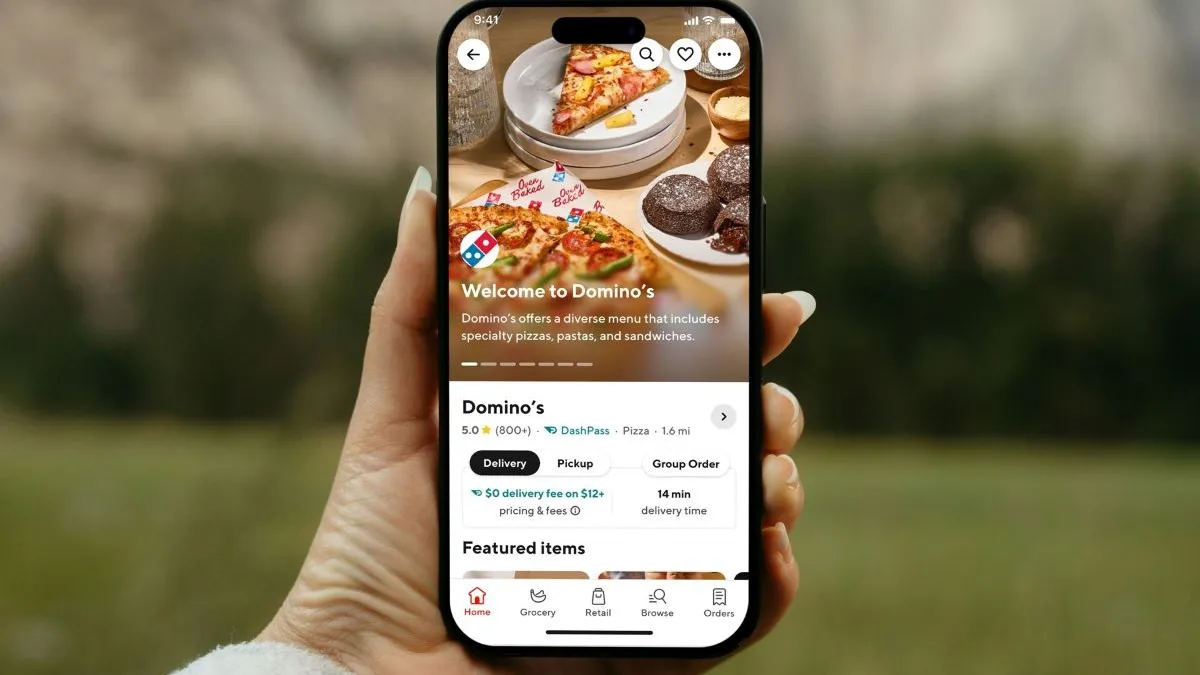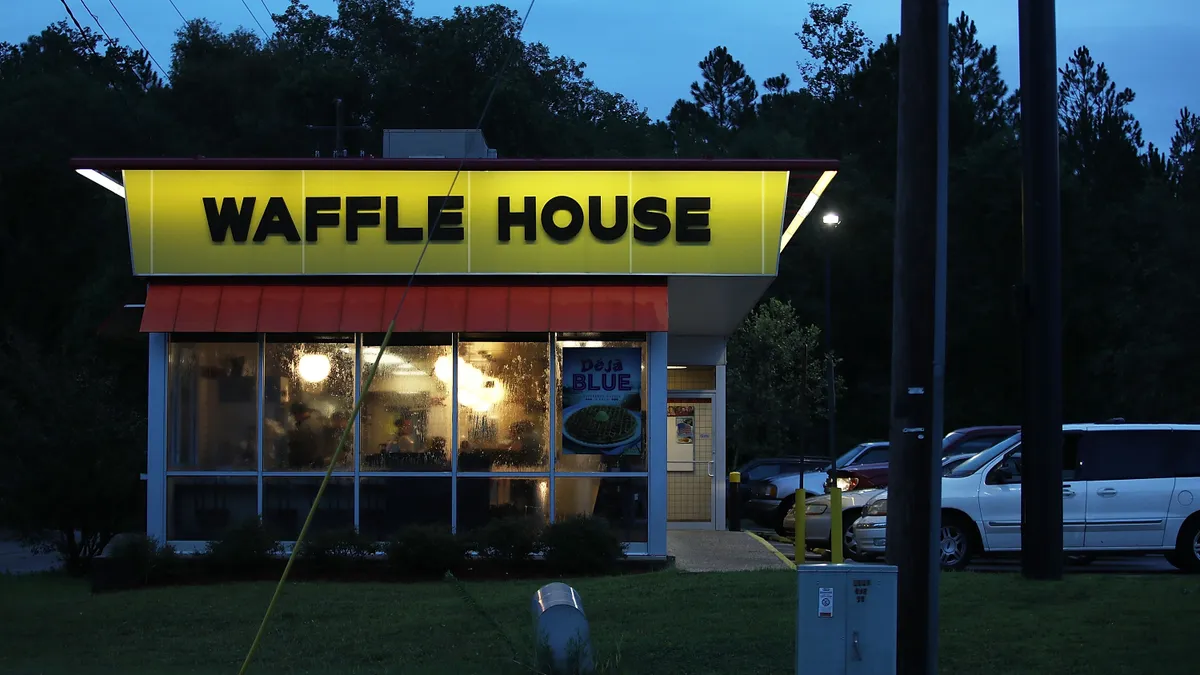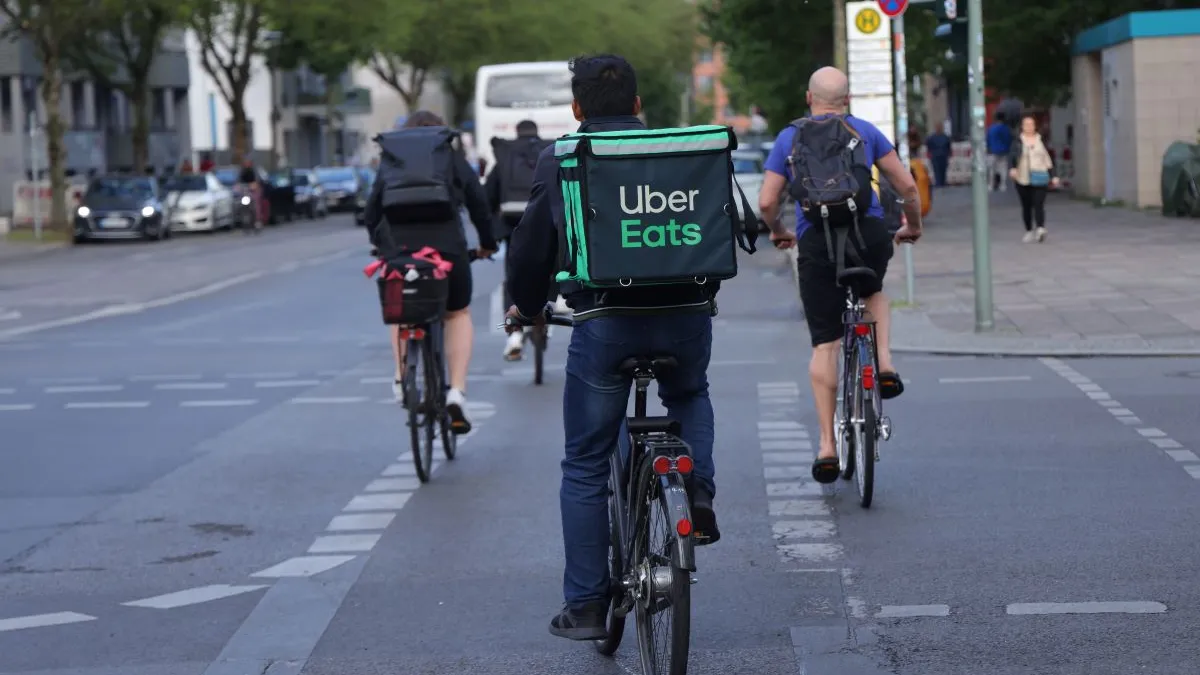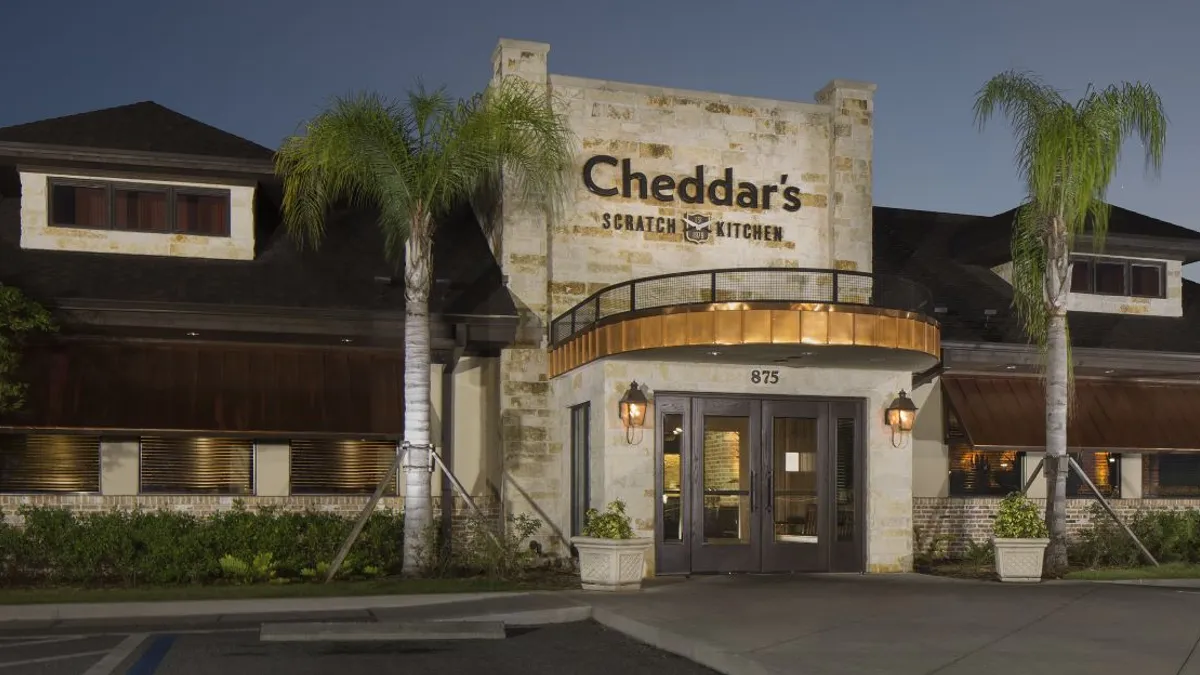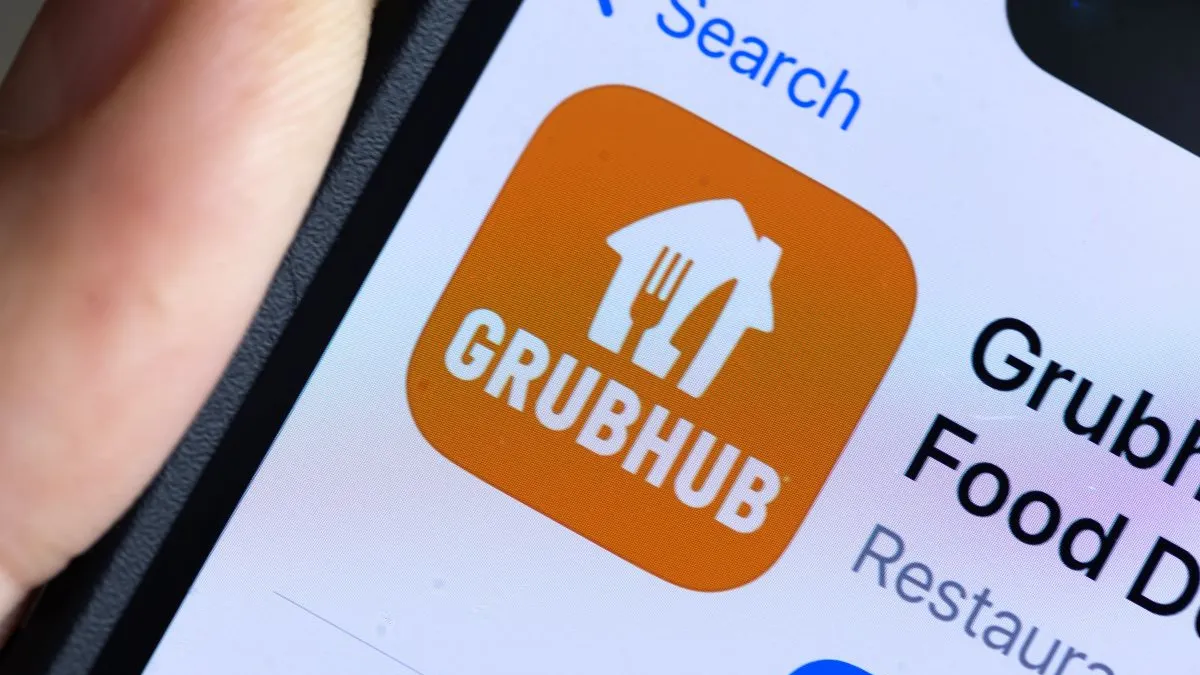Prior to the pandemic, P.F. Chang's managed catering deliveries in-house and was already exploring self-delivery solutions. The chain didn't expect the COVID-19 crisis to prime its customers to engage with its native channels, allowing the Asian fast casual to deepen diner loyalty, increase order frequency and better own its off-premise offerings.
"With all of the challenges that the pandemic brought us, this is probably one of the gifts that it brought, frankly, is that behavior change overnight," Candice Barnett, P.F. Chang's vice president of off-premise dining, said. " When somebody orders on a third-party platform, people are loyal to that platform, and getting them to switch that [loyalty] is a whole other behavior change."
In late October, P.F. Chang's officially launched self-delivery with Cartwheel, a delivery management software firm, at more than 100 restaurants, following a pilot program.
"Outsourcing delivery, while convenient, will only get more expensive as demand continues to increase, and the customer experience depends not only on the third party and its practices, but on the individual driver as well," Alex Vasilkin, Cartwheel's co-founder and CEO, said in a press release. "Self-delivery from Cartwheel helps restaurants safeguard against price increases from outsourced delivery partners while strengthening brand loyalty, and we're proud to power this offering for P.F. Chang's."
P.F. Chang's still partners with third-party delivery firms, including Uber Eats, DoorDash and Grubhub, offering a hybrid off-premise experience, but plans to eventually scale the offering to all of its U.S. locations.
Restaurant Dive spoke with Barnett to learn more about how self-delivery will shape P.F. Chang's off-premise strategy, and the challenges and opportunities that come with managing a delivery business.
Editor's note: This interview has been edited for clarity and brevity.
RESTAURANT DIVE: How does P.F. Chang’s partnership with Cartwheel work?
CANDICE BARNETT: What we really liked about Cartwheel in particular is a couple of things. One is that they're really restaurant-focused. Some of the other software companies tend to have a courier focus, and 80% to 90% of it works the way you would want it to from a restaurant standpoint, but there's that 10% or 20%, that you really need to be a little more specific to how we do things.
The other piece is their willingness to adapt the product for us and their ability to turn around really quick, really good development work for requests that we have. We've been able to not only launch with them but get features in place that we didn't think we would be able to have or thought that it would take a long time with other companies.
The other thing that's really important to us with self-delivery is we know that it's not going to be our only delivery offering. We don't live in a world where we are going to be able to deliver 100% of our own orders. So it was really important for us to continue to have that hybrid system and be able to dispatch to third parties when you need to, and being able to own delivery when you can.
Does Cartwheel manage the delivery fleet or does P.F. Chang's?
The delivery drivers are all our P.F. Chang's employees who are taking those orders and they're walking, biking or driving, depending on the market. We did look at some companies that you could outsource that to and have kind of a gig-type workplace offering. But because we were able to test this and really understand what the benefits are of self-delivery, it becomes very obvious in the data that outsourcing this to another company is not as successful as bringing it in-house. We really wanted to make sure that we could deliver the same level of service and hospitality to our guests that are choosing to dine at home — we wanted to meet them where they were in the best way possible.
How big is the delivery fleet that services the 100 restaurants that currently offer self-delivery?
I don't have that number off the top of my head. I can give you an average and say most locations have probably around five to six drivers each. Some more, some less, but that's a good average. We've got locations where delivery is a higher percentage of their overall business, and so they have more people doing that for them.
Has it been challenging to maintain a team of delivery couriers during the labor shortage?
Oh, absolutely. No doubt about it. It's probably the biggest challenge we have really just across the board, whether it's drivers or other employees. We want to retain the people we have so we're looking at it as a retention play versus a recruiting play. Of course we're still recruiting — it's not an either or — but keeping the people you have is really the name of the game and we think that when we add self-delivery to locations, really what we see is an overall growth for the business in general. We don't just see an increase in delivery orders, we see an increase in all OPD [online, pickup and delivery] orders, and we actually see increases in dine-in traffic because of it. When more people are making more money at an hourly level, they're getting better tips, they are now working more hours and now we have another outlet for those same people we already employ to make money. It's helping retention in those locations.
The challenge is getting started. If you don't have the volume yet and you've got to build that, that can take some time so that it gets to the team member-level where they're experiencing the same wins that the business is. We're also trying to be competitive when it comes to pay rates, compensation for mileage and things like that to make sure that people are taken care of. If they're going to get in their vehicle and go somewhere, we want to make sure that they're compensated for all of their time and the items that they're using to do business. We do a cell phone reimbursement plan for all of our drivers, we do a mileage reimbursement plan, which they like because it's a little extra money at the end of the month. So that's working out well, but it is challenging. Getting people in the door is probably the hardest part at this time.
What software features did Cartwheel develop for you that make self-delivery worth it?
They have a mapping interface that we use, and they've done several updates to that so that it functions faster and gives us the information we need on the same screen. We've done things with them to be able to manage capacity settings for our drivers so that we're not overloading them with too many deliveries at one time because we want to make sure once we've accepted the order, we can deliver it in the appropriate amount of time.
We've done a lot of work with them to update the driver app to make it a little bit more user-friendly for our drivers — they love the app, it's so intuitive now. They literally pick it up and can use it in five minutes. It takes very little training, which is a huge benefit. I think any system that you have to take days or weeks to figure out means you need to fix the system. The app for our driver fleet is very easy to use, and we're working right now on automating some of the processes so the restaurants and drivers have less clicks to either accept or assign orders.
We've worked a lot with Cartwheel on reporting as well and what the key reporting that our restaurant managers need to be able to see in real time, and that's something we're still currently working on.
How does P.F. Chang’s choose which orders are serviced by self-delivery versus its third-party partners?
Within Cartwheel, we create custom maps for every restaurant before they go live, and then we continue to update those maps. We've got excellent reporting right now that shows us where opportunities are where we can expand to. I'm glad you asked this because this is another development we did with Cartwheel — we can now have multiple maps loaded to one location where we can go a certain amount of miles or in a specific area for order smaller orders. And then we can have another map for larger orders. So we can prioritize and say this is a catering order and that needs to be treated slightly differently and needs to go to a specific type of driver who understands catering.
I don't want my drivers out of the building for a long time. That's the main difference between a courier service and a restaurant. A courier service is going all over town right, like DoorDash or any of those places, so I pick up at Point A, drop off at Point B and then be right there to pick up another order from another restaurant. When you have a single location, my drivers are going out and coming back, going out and coming back. So there's only so much time they should be on the road, one for food quality, and two it still has to make sense economically, right? So in the case of those large orders, drivers have an expanded map, which means they can go further because you've ordered an order that's $100 or more. So we can afford to have them drive further. We can pay everything that goes along with our team members because of that larger order. It's worth it.
What I would also say is that we want to own our three- and five-mile areas. Ultimately, if I could snap my fingers today, we would be doing 100% of our own deliveries within that parameter. That's really what we're working toward, and we're much closer to actually achieving that now, which we're very happy with.
Do you have plans to expand self-delivery?
Oh, absolutely. My team has been out in the field visiting our self-delivery locations for the last month and a half, doing in-person visits, making sure that everybody is fully understanding the system and then really helping them identify their challenges so we can move forward, and we've seen great traction with that. That's really informing our rollout for next year. We'll pick this up again in Q1 2022 because we try to stay away from rolling out things around the holidays. We can get all of our locations on board with self-delivery now that we have different options for couriers, whether you're using a bicycle, your feet or you're driving. We've got ways for pretty much every restaurant in our system to have some version of self-delivery. That's our goal, and it will probably take all of next year and the first half of 2023 to complete the rollout. Also, all of our new restaurants that we open automatically open with self delivery.
Across the restaurants that offer self-delivery, what percentage of delivery orders are being serviced by P.F. Chang’s versus delivery aggregators?
I would say it's pretty close to 50/50 across all locations and that's for every order, whether they're within our delivery area or not. Some locations that have been doing self-delivery longer and have more experience and more drivers deliver almost 100% of their own delivery orders. We've got maybe five or six locations like that, where the only reason they miss an order is because it just happens to not be included in their map.
Going forward, do you have a target percentage of self-delivery fulfillment you want to see per unit?
Right now we're looking at a minimum of 50% delivery across the board. More recently, we've gone a little bit tighter, and we’re saying you should be doing 100% of your deliveries within three miles. That's our focus right now. Once a restaurant gets to that point or close to that point, then they would need to own the five-mile radius because once you own those two, because most of your deliveries are within that area, then we're probably looking at maybe 70% of delivery orders being fulfilled by self-delivery, I would guess.
What has P.F. Chang's learned from implementing self-delivery?
Going into self-delivery is a scary proposition, I think, for a lot of folks. It certainly wasn't a decision made lightly on our end — we did a lot of testing before we went into a rollout. But the benefits of it are really massive. We know that when our team members deliver to customers, they order more frequently and they order higher amounts of food for whatever reason. And so we get better scoring on our surveys that come in through our own delivery than we do through any of the third-party channels. We know our people are really making a difference in that experience for our guests. And that's something that we thought would be an added bonus. But frankly, it's the main reason we do it at this point. We know that if we invest in our guests and their satisfaction with something like self-delivery, they're going to continue to use us because they can trust and know that we can execute in the way that they would expect. That's been a huge learning for us.



